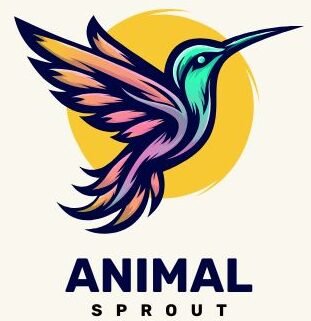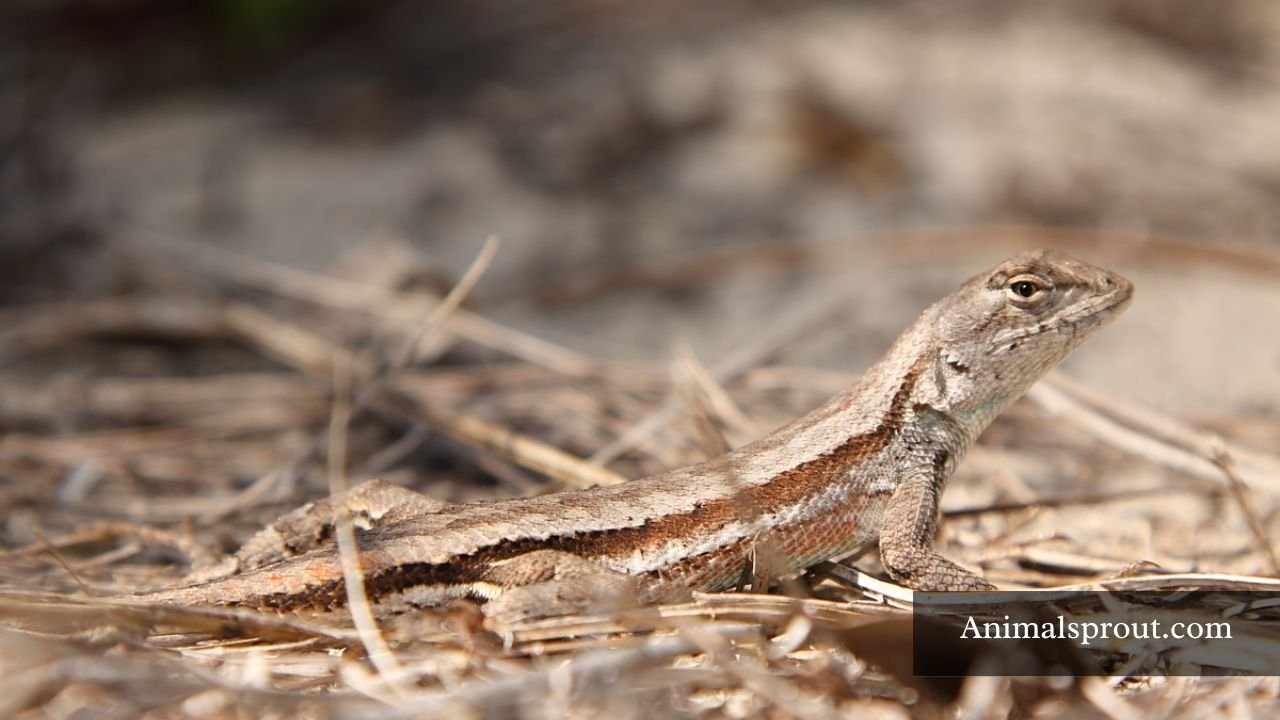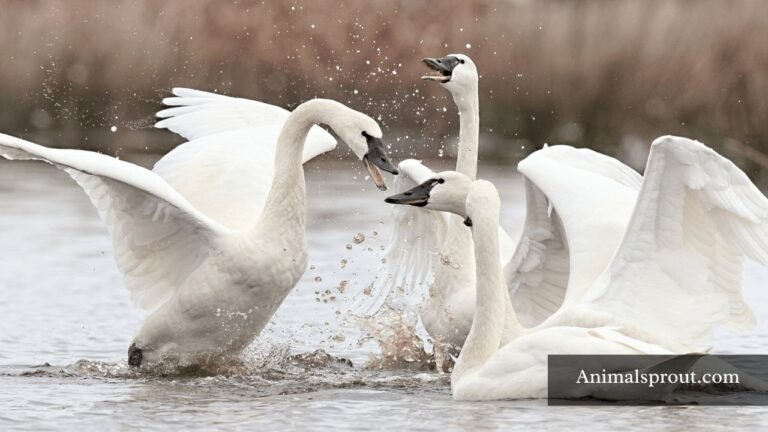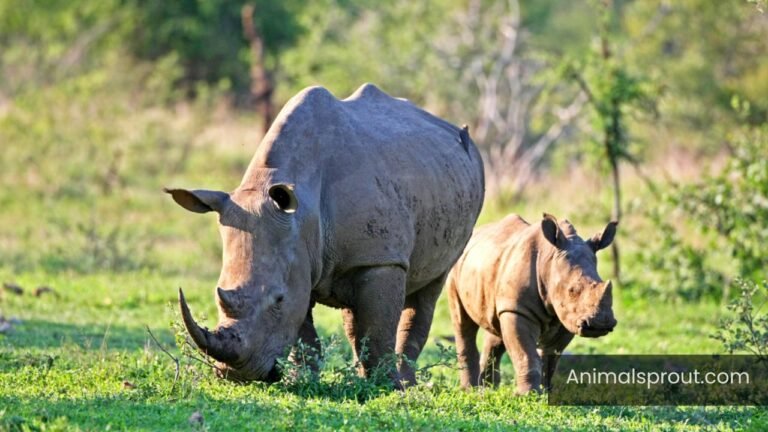Top 14 Different Types of Lizards in Florida (With Pictures)
From the vibrant green anole to the elusive Florida sand skink, these fascinating creatures play essential roles in our ecosystems. Understanding the diversity of lizards in Florida is not just about appreciation; it helps us protect their habitats and maintain ecological balance. In this article, we’ll explore the different types of lizards in Florida, their behaviors, and why they matter to the Sunshine State.
Different Types of Lizards in Florida
Below is the list of lizards that live in Florida:
| Number of Lizards | Names of Lizards of Florida |
| 1 | Eastern Fence Lizard |
| 2 | Florida Scrub Lizard |
| 3 | Green Iguana |
| 4 | Reef gecko |
| 5 | Cuban Brown Anole |
| 6 | Six-lined Racerunner |
| 7 | Tokay Gecko |
| 8 | Green Anole |
| 9 | Florida Sand Skink |
| 10 | Knight Anole |
| 11 | Nile Monitor |
| 12 | Broadhead skink |
| 13 | Brown Basilisk |
| 14 | Argentine Black and White Tegu |
Eastern Fence Lizard
Scientific Name: Sceloporus undulatus
The Eastern Fence Lizard, a captivating resident of Florida, is often underestimated in the grand tapestry of the state’s diverse wildlife. With its rugged, textured skin and striking blue throat in males, this lizard is not only a visual delight but also an ecological cornerstone. Its presence is vital for maintaining the balance of local ecosystems, as it preys on insects, keeping pest populations in check.
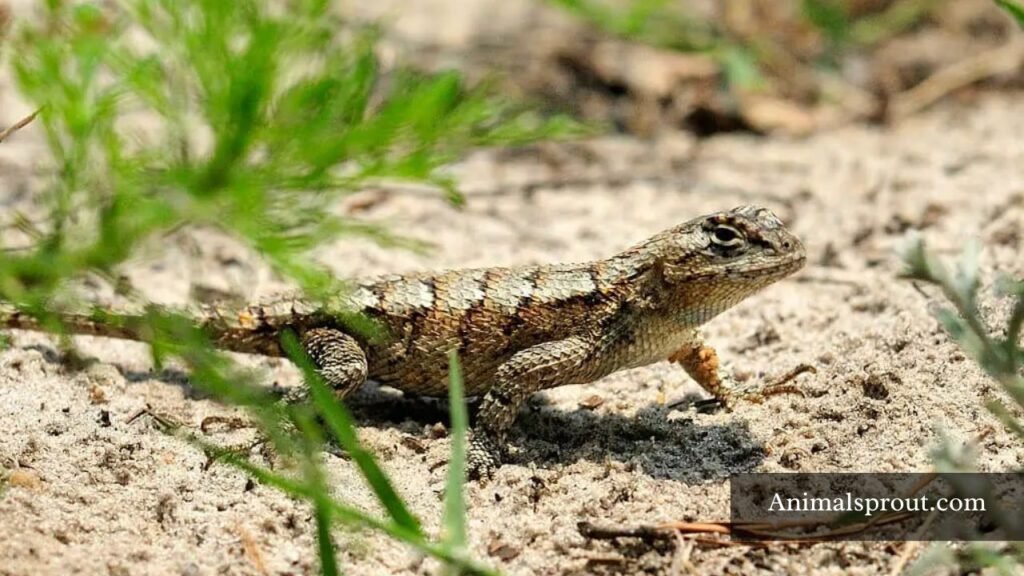
Beyond their ecological role, these lizards offer a slice of Florida’s unique character through their fascinating behaviors. Often seen basking in the sun on fences or tree trunks, they embody the sunny disposition of the state itself. Their territorial displays, where males perform push-ups to assert dominance, showcase the intricate social dynamics that unfold in the wild. Their ability to adapt to urbanized settings highlights a resilience that speaks volumes about survival in a changing environment.
Florida Scrub Lizard
Scientific Name: Sceloporus woodi
The Florida Scrub Lizard is a small but fascinating reptile that thrives in the unique ecosystems of the state’s scrub habitats. With its vibrant colors, often showcasing shades of blue and green, this lizard stands out against the sandy soils and dense underbrush typical of its environment. Unlike many of its cousins, the Florida Scrub Lizard is specifically adapted to thrive in fire-prone areas, relying on periodic wildfires to maintain its habitat. This resilience highlights a remarkable symbiosis between the lizard and the ecosystem, as fire rejuvenates the scrublands, creating ideal conditions for its survival. As urbanization and habitat loss continue to threaten their existence, understanding their needs and behaviors becomes crucial for conservation efforts.
Green Iguana
Scientific Name: Iguana iguana
The green iguana, an emblematic species of Florida’s diverse reptilian population, blends seamlessly into the lush backdrop of subtropical landscapes. While these vibrant creatures are often admired for their striking emerald hue and long, whip-like tails, there’s a fascinating side to their existence that goes beyond aesthetics. As powerful climbers, they can often be spotted perched high in trees, enjoying the sun’s warm rays while feasting on leaves, flowers, and even fruits. This arboreal lifestyle not only helps them escape predators but also showcases their impressive adaptability in a rapidly changing environment.
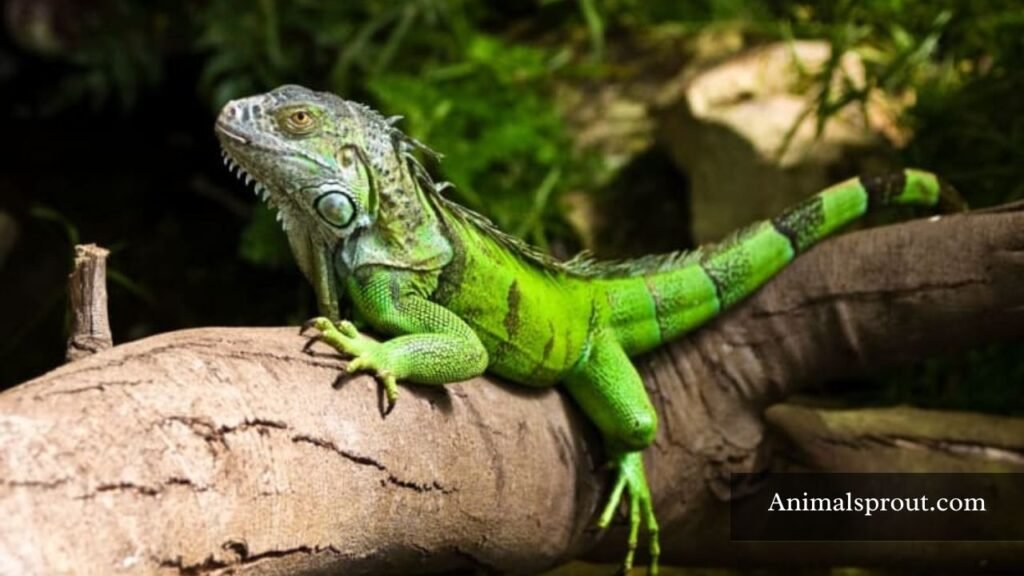
However, the presence of green iguanas in Florida is a double-edged sword. Though they are a beloved sight for wildlife enthusiasts, their growing population can disrupt local ecosystems. Indigenous plants suffer as these lizards voraciously consume foliage, leading to an imbalance in the natural order. Moreover, their burrowing habits can cause significant damage to infrastructure — a challenge that local authorities are grappling with as they seek to manage this exotic species. Exploring the impact of green iguanas opens up an intriguing dialogue about the balance between appreciation for snake-eyed beauty and the responsibility of sustainable coexistence in Florida’s rich biodiversity.
Reef gecko
Scientific Name: Sphaerodactylus notatus
The reef gecko is one of Florida’s most fascinating yet elusive inhabitants. Often found in the coastal regions, particularly along the Keys, these small lizards are masters of camouflage, blending seamlessly with their surroundings. Their unique coloration — ranging from sandy browns to greens — helps them avoid predators and navigate the dappled sunlight of their habitats. However, it’s not just their appearance that sets them apart; these geckos exhibit a fascinating behavior called “autotomy,” where they can shed their tails to escape from danger, regenerating a new one later.
Exploring the nocturnal activities of the reef gecko reveals a world bursting with surprises. As night falls, they become active insect hunters, darting swiftly among the rocks and foliage. Their keen eyesight is complemented by a remarkable ability to scale vertical surfaces, allowing them to access elusive prey hidden in crevices. In addition, reef geckos play a vital role in maintaining the ecological balance, controlling insect populations that could otherwise spiral out of control.
Cuban Brown Anole
Scientific Name: Anolis sagrei
The Cuban brown anole, a small but striking lizard, has become a ubiquitous symbol of Florida’s diverse ecosystem. With its rich brown and olive green hues, it blends seamlessly into the subtropical environment, yet stands out with its distinctive dewlaps — colorful throat flaps that males use to attract mates and assert dominance. Observing these displays in their natural habitat can reveal much about their social behaviors and territorial instincts, offering a fascinating glimpse into the life and times of these agile reptiles.
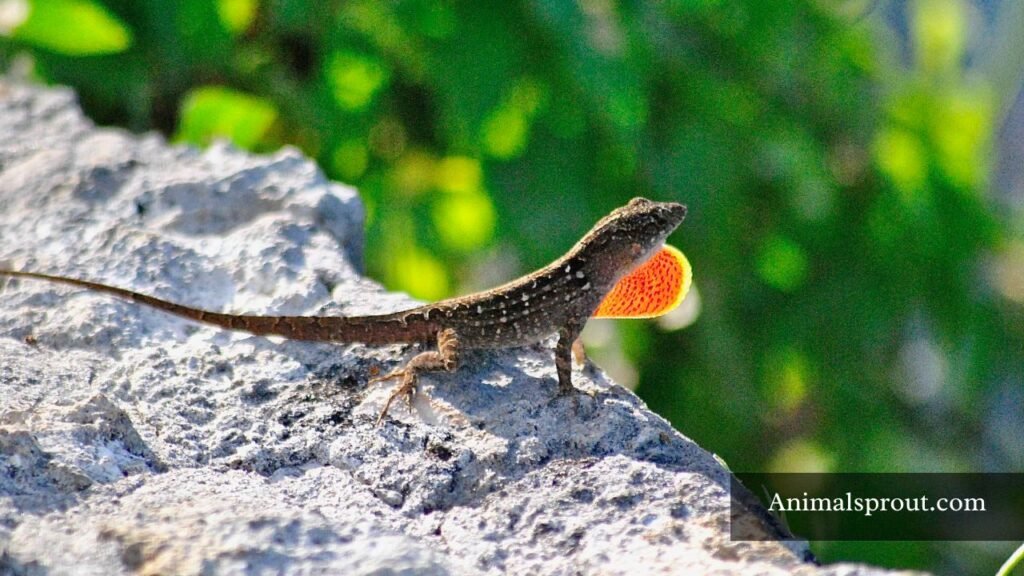
Interestingly, the Cuban brown anole has become a pivotal part of Florida’s ecosystem, outcompeting native species for resources. While some see this as a potential threat to biodiversity, others highlight the resilience and adaptability of these lizards. They thrive in both urban settings and natural landscapes, showcasing their remarkable ability to adjust to changing environments. This dual existence challenges us to consider the balance between invasive and native species, urging a deeper understanding of ecological dynamics in a rapidly evolving landscape.
Six-lined Racerunner
Scientific Name: Aspidoscelis sexlineatus
The Six-lined Racerunner, a vibrant denizen of Florida’s sandy habitats, is not just another lizard; it’s a fascinating example of adaptability and speed. With its striking stripes and agile movements, this species embodies the quintessential qualities of a racerunner — capable of reaching impressive speeds that can leave admirers in awe. These lizards excel in their native environments, utilizing their keen eyesight and swift reflexes to dart away from predators and catch insects, making them both agile predators and elusive prey.
Beyond their impressive speed, Six-lined Racerunners also play a vital ecological role. They help maintain insect populations, contributing to the balance of their ecosystems. Moreover, their presence is an indicator of healthy environments — thriving racerunners often signal robust ecosystems rich in biodiversity. Observing these lizards in action, whether they are basking in the sunlight or darting across sandy trails, provides a window into the dynamic interactions that sustain life in Florida’s unique landscapes.
Tokay Gecko
Scientific Name: Gekko gecko
The Tokay Gecko, with its striking blue-gray skin adorned with bright orange spots, captivates both residents and tourists alike in Florida. Originally from Southeast Asia, this vibrant lizard has established a niche in Florida’s warm climate, thriving in urban areas where it can often be spotted basking on walls or darting across patios at night. Its distinctive, loud call — often likened to a sticky ‘tokay’ sound — serves as an unmistakable reminder that this exotic species now claims part of the Sunshine State as its home.
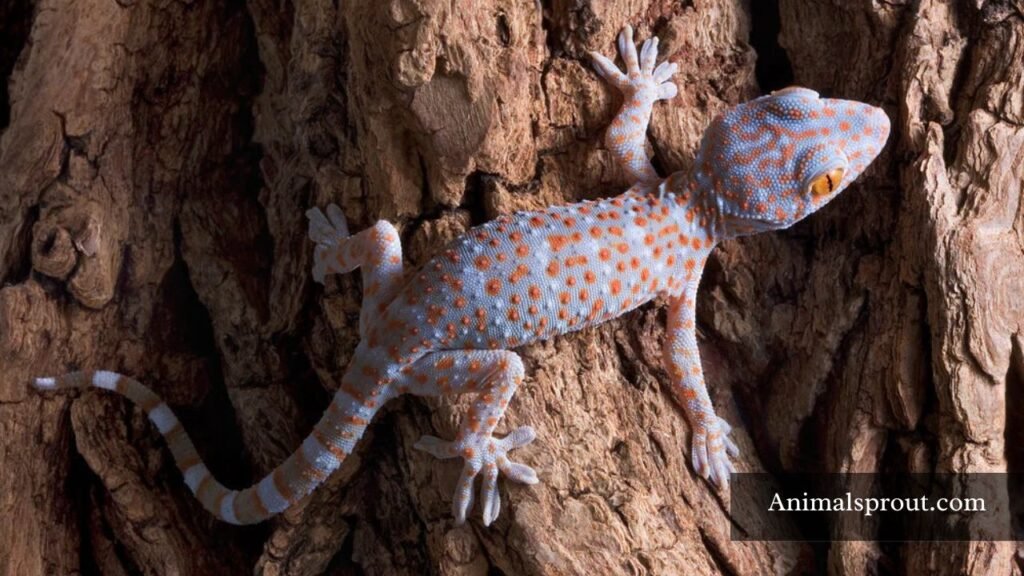
Beyond their dazzling appearance and vocal prowess, Tokay Geckos are remarkable for their behavior. Unlike many lizards that flee from potential threats, the Tokay Gecko exhibits an assertive and territorial attitude. Known for their fierce nature, they often challenge larger rivals if they feel their space is invaded. This boldness can sometimes create tension with local wildlife, but it also makes them fascinating subjects of observation for reptile enthusiasts.
Green Anole
Scientific Name: Anolis carolinensis
The Green Anole, often mistaken for a chameleon, captivates with its vibrant green hue that can shift to brown for camouflage. This incredible adaptability allows it to blend seamlessly into the lush subtropical landscapes of Florida, where it thrives in both urban and natural habitats. These lizards are not just pretty faces; they play a significant role in local ecosystems, controlling insect populations and serving as a food source for various predators.
What truly sets the Green Anole apart is its unique behavioral displays. Males often show off their vibrant dewlaps during territorial disputes or courtship rituals, creating a striking dance of colors that adds a theatrical flair to the otherwise quiet surroundings. Their ability to change color is not merely for show; it also serves as a vital survival mechanism, helping them evade predators or communicate with others in their territory. With their curious nature and fascinating traits, Green Anoles offer a glimpse into the intricate web of life that thrives in Florida’s diverse ecosystems.
Florida Sand Skink
Scientific Name: Plestiodon reynoldsi
The Florida Sand Skink, a slender and elusive inhabitant of the state’s unique ecosystems, offers a fascinating glimpse into the delicate balance of biodiversity. This small lizard, with its smooth, shiny scales and a distinctively streamlined body, thrives in the sandy scrub habitats of central and southern Florida. Unlike many other lizards, the Sand Skink spends much of its time burrowing beneath the surface, making it a hidden gem that often goes unnoticed by casual observers.

What sets the Florida Sand Skink apart is its critical role in maintaining soil health by aerating and mixing the substrate as it digs. This not only aids in nutrient cycling but also supports the diverse plant life that the skink depends on for survival. Unfortunately, this unique lizard faces threats from habitat loss and degradation due to urban development and invasive species. Conservation efforts are essential not only for the protection of this fascinating reptile but also for the ecosystems that rely on it. By understanding and appreciating the Sand Skink, Floridians can help advocate for the preservation of their natural heritage.
Knight Anole
Scientific Name: Anolis equestris
The Knight Anole, a striking lizard native to Cuba, has found a surprising home in the lush landscapes of Florida. These formidable reptiles, reaching lengths of up to 18 inches, flaunt vibrant green bodies with distinct orange or yellow markings, making them a standout species among Florida’s diverse wildlife. Their camouflage allows them to thrive in various habitats, from urban gardens to subtropical forests, but their presence also raises intriguing ecological questions about the balance of local ecosystems.
While many view the Knight Anole as a vibrant addition to Florida’s wildlife, their voracious appetite for insects and even smaller lizards leads to concerns about competition with native species. The adaptability of these lizards is fascinating; they can often be seen basking in the sun or clinging to tree branches, displaying both territorial behavior and a remarkable ability to navigate human-altered environments.
Nile Monitor
Scientific Name: Varanus niloticus
The Nile Monitor, an imposing creature native to Africa, has made quite a splash in Florida’s ecosystems. These lizards, exceeding four feet in length, thrive in diverse environments, from wetlands to urban backyards. With their powerful bodies and sharp claws, they’re not only formidable hunters but also skilled swimmers, often seen gliding through freshwater swamps and canals.
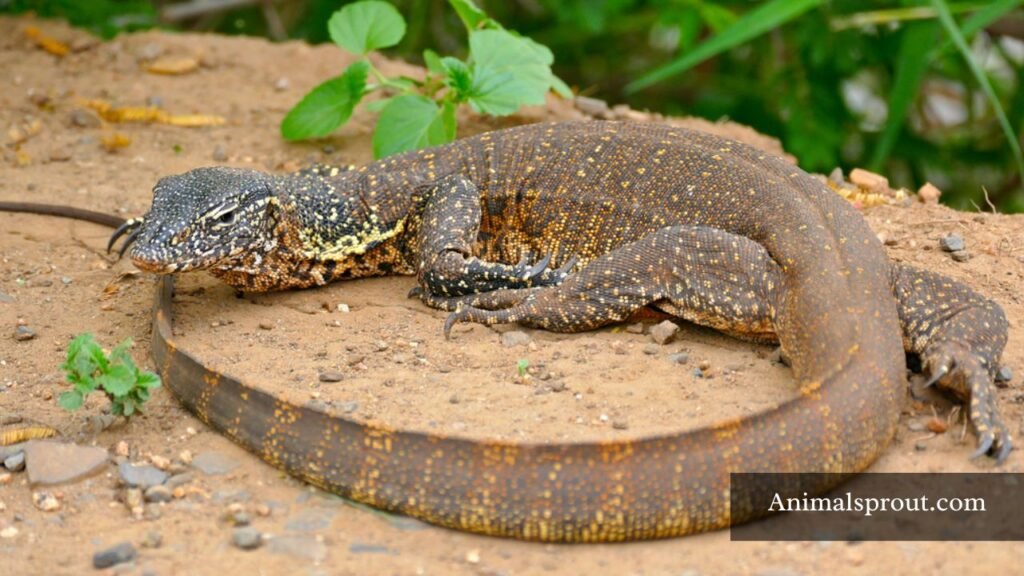
What sets the Nile Monitor apart is its adaptability, allowing it to thrive in an area where many native species struggle. This adaptability poses a real threat to Florida’s local wildlife; these predators feast on everything from birds to small mammals, disrupting the delicate balance of the ecosystem. Their presence has sparked discussions among conservationists and residents alike, igniting debates on how best to manage these invasive reptiles without harming Florida’s native biodiversity.
Broadhead skink
Scientific Name: Plestiodon laticeps
The Broadhead skink, with its striking blue tail and robust body, is a standout amongst Florida’s diverse reptilian residents. Often mistaken for a juvenile because of its vibrant coloration, this lizard can grow up to 8 inches long, showcasing a captivating blend of beauty and adaptability. Found basking on sunny rocks or darting through leaf litter, it plays an essential role in Florida’s ecosystems, helping control insect populations and serving as prey for larger predators.
One of the most intriguing aspects of the Broadhead skink is its social behavior. Unlike many reptiles, these lizards exhibit a surprising level of interaction, often forming small groups during the warmer months. Their communal nature isn’t just for warmth; it facilitates quicker responses to predators and enhances their foraging efficiency. Observing these lizards interact reveals a world of sophistication that challenges the typical perception of reptilian behavior, inviting us to appreciate the complexities within their seemingly simple lives.
Brown Basilisk
Scientific Name: Basiliscus vittatus
The Brown Basilisk, often called the “Jesus Christ lizard” for its remarkable ability to run on water, is a fascinating creature that captures the imagination of Florida’s wildlife enthusiasts. Found primarily in the swamps and forests of South Florida, this agile lizard can sprint across the surface of water for short distances, thanks to its unique toe structure and lightweight body. This incredible adaptation not only allows it to escape predators but also highlights the wonders of evolution in action, showcasing nature’s ingenuity.
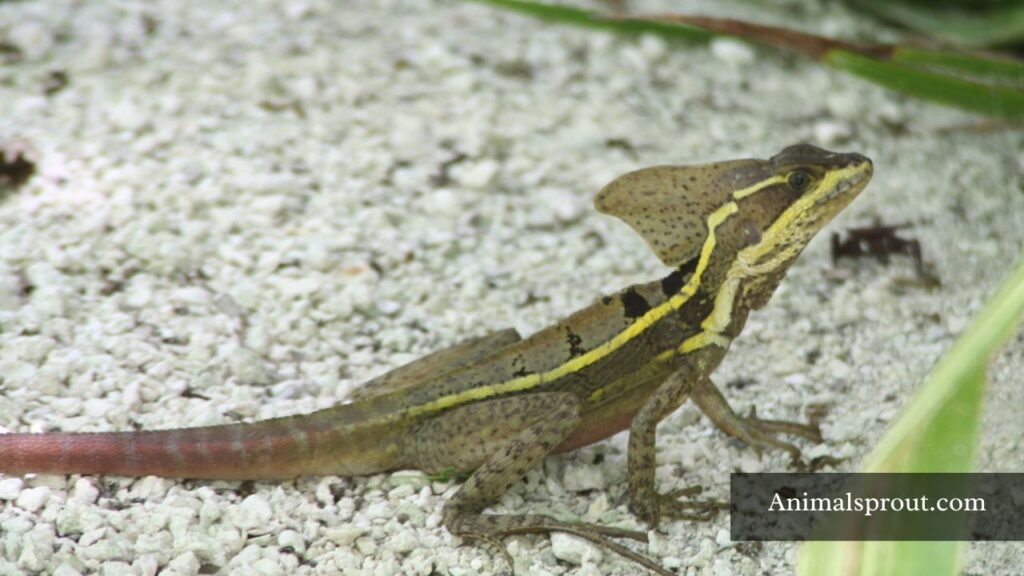
Beyond its impressive locomotion, the Brown Basilisk holds ecological significance in maintaining the balance within its ecosystem. As an omnivorous feeder, it preys on insects, small mammals, and even some vegetation, playing a crucial role in controlling pest populations while contributing to the nutrient cycle through its waste. Observing these lizards in their natural habitat offers a glimpse into the complexity of life in Florida’s wetlands, where every species, no matter how small, has a big role to play. Their presence serves as a reminder of the delicate interconnections in nature, making the Brown Basilisk not just a curiosity, but a vital cog in the rich tapestry of Florida’s biodiversity.
Argentine Black and White Tegu
Scientific Name: Salvator merianae
The Argentine black and white tegu, a striking creature with its bold patterns, has become an intriguing topic among wildlife enthusiasts in Florida. This large lizard, which can grow over four feet long, is not just a visual marvel; it’s also an adaptive survivor. Originally hailing from South America, these tegus have established a foothold in Florida, showcasing their resilience in the face of new environments. Their ability to thrive in diverse habitats — from wetlands to suburban backyards — highlights not only their versatility but also the impact of climate and human activity on species migration.
One fascinating aspect of the Argentine tegu is its omnivorous diet. While it enjoys a range of foods, including insects and fruits, it’s become notorious for preying on native wildlife, like bird eggs and small mammals, raising concerns among conservationists. Their sharp intelligence adds another layer to their adaptability; they can learn behaviors and find food sources by observing their environment.
Readmore: Explore Top 17 Lizard Species in Texas.
Final Words
Florida is home to a diverse array of lizard species, each contributing uniquely to the state’s ecosystems. From the agile green iguanas to the vibrant anoles, these reptiles showcase a fascinating range of colors and behaviors. Understanding the different types of lizards not only enhances our appreciation of Florida’s wildlife but also highlights their important roles in controlling insect populations and maintaining ecological balance. As you explore the state’s natural areas, keep an eye out for these remarkable creatures. Let’s work together to protect their habitats and ensure that future generations can enjoy Florida’s rich biodiversity.
FAQs
What is the most common lizard in Florida?
The most common lizard in Florida is the Brown Anole. Introduced from the Bahamas in the 1800s, these small, agile lizards have become a staple in Florida’s ecosystems. You’ll often spot them basking in trees, on fences, or even around your backyard.
What is the rarest lizard in Florida?
The rarest lizard in Florida is the Florida Sand Skink. This elusive reptile is primarily found in the dry, sandy regions of the state, particularly in central and southeastern Florida.
What is the biggest lizard in Florida?
The biggest lizard in Florida is the green iguana. These reptiles can grow up to 5 feet long, including their tails.
